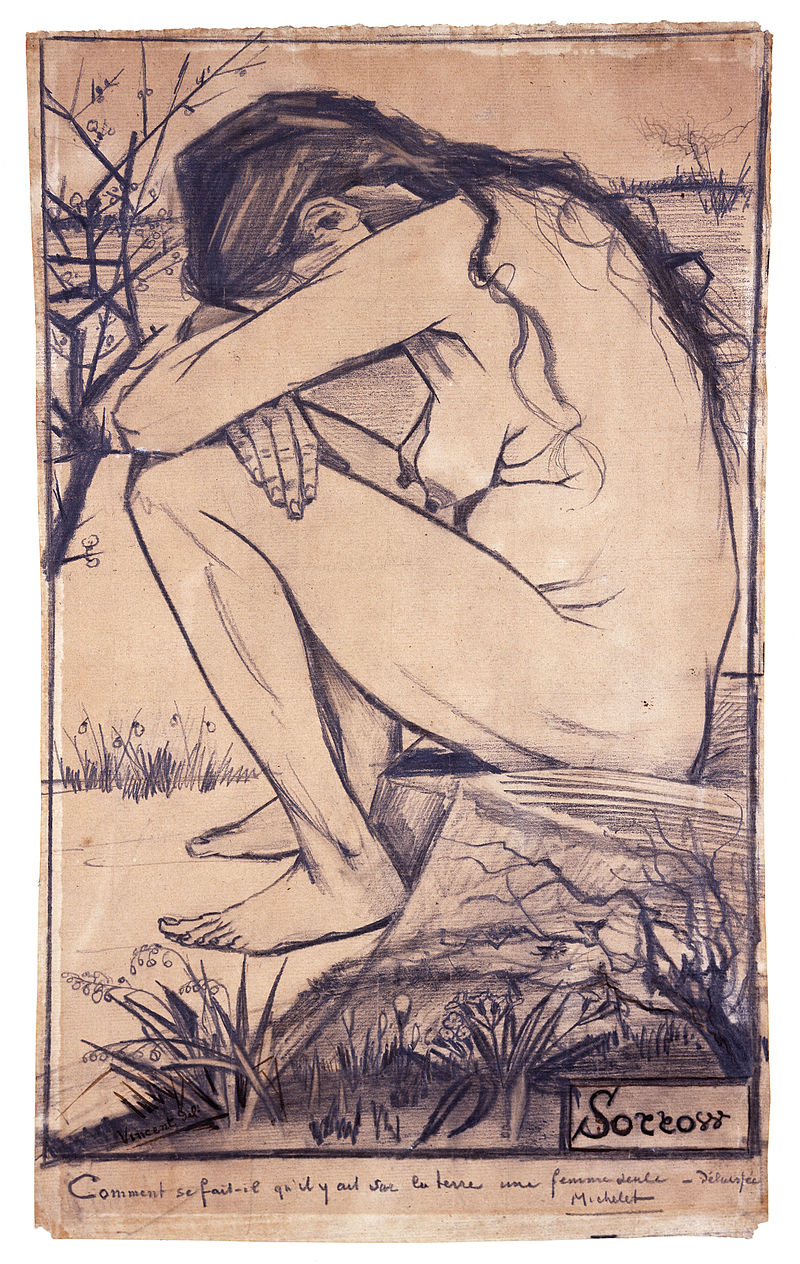And “love” is just a miserable lie
You have destroyed my flower-like life
Not once – twice
You have corrupt my innocent mind
Not once – twice.
(The Smiths, Miserable Lie)
 Edvard Munch (Norwegian, 1863-1944), Maiden and the Heart, 1896
Edvard Munch (Norwegian, 1863-1944), Maiden and the Heart, 1896
Edvard Munch’s etching shows a nude girl sitting outdoors, on the grass, surrounded by a few scarce flowers. She turned her back on us, showing off the beautiful line of her arching back. We cannot meet her gaze, but seen from the profile her furrowed brow allows us to assume that the feelings mounting in her soul are that of sadness or pain. Our attention immediately leads somewhere else. In her stretched hands she is holding a heart; live, bleeding, crimson red (we can imagine), pulsating, aching, painful heart. From about 1894, Munch was getting more and more interested in woodcuts and etchings, and he was skilful in those art forms as well as in standard oil on canvas.
Paintings of Edvard Munch nearly always explore deep, profound themes and states of the soul; anxiety and alienation, loneliness, death and despair, love and pain, and the crown of his themes is love as a source of anguish and pain. The sorrowful Maiden who is holding the bleeding heart in her hands is a visually simple etching, without too much detail, but the longer you gaze at it the more feelings it evokes, the more depth you see in it. Often used, and overused phrases such as “heart ache” or “broken heart” suddenly get a new exciting flair when I gaze at Munch’s interpretation of the subject. The idea of portraying pain so literally and so directly has so much of childlike straightforwardness and honesty in it. A broken heart is presented as a real bleeding thing that the Maiden can hold in her hand just as she would hold a book or a flower, and her hands and her feet are coloured with the crimson blood which drips, sweet and sticky as honey, on the grass, while the flowers listen, their petals full of worry. The trees in the background, silent and sketch-like, are mute to her pain.

Frida Kahlo, Memory (The Heart), 1937
I simply adore the idea of expressing pain so directly! In her painting “Memory (The Heart)”, Frida Kahlo did a similar thing. The oversized bleeding heart is meant to portray the pain inflicted by Diego Rivera’s affair with her younger sister.

Vincent van Gogh, Sorrow, 1882
Simple lines, expressiveness and pain of Munch’s etching reminded me of a famous drawing called “Sorrow” that Vincent van Gogh made in 1882. It shows Vincent’s friend Sien, at the time a sad, destitute pregnant woman prone to drinking, mostly likely working as a prostitute. Such simplicity of lines and depth of emotions in both works. I usually love Van Gogh’s rapturous mad yellows and Munch’s strong whirling, almost psychedelic brushstrokes but here the black line on white background is all I need. Perhaps the colour is an excess when the subject is such an intense emotion?


